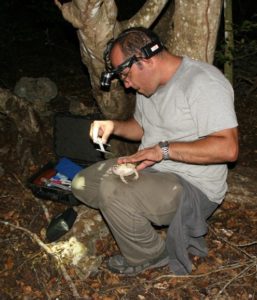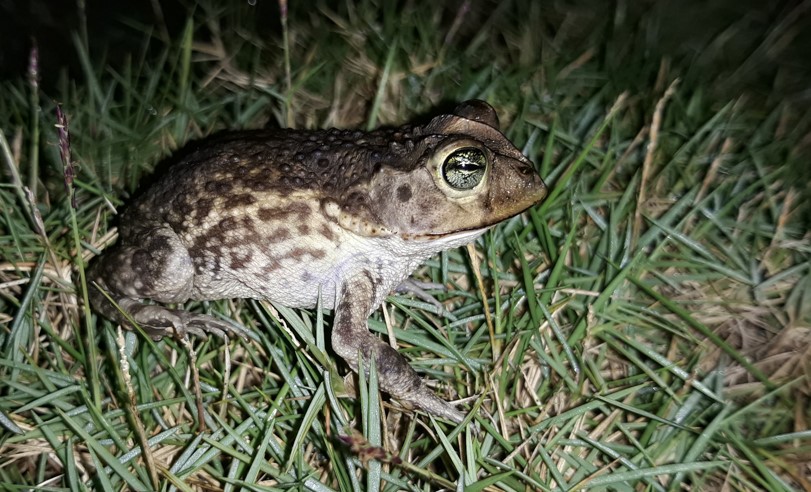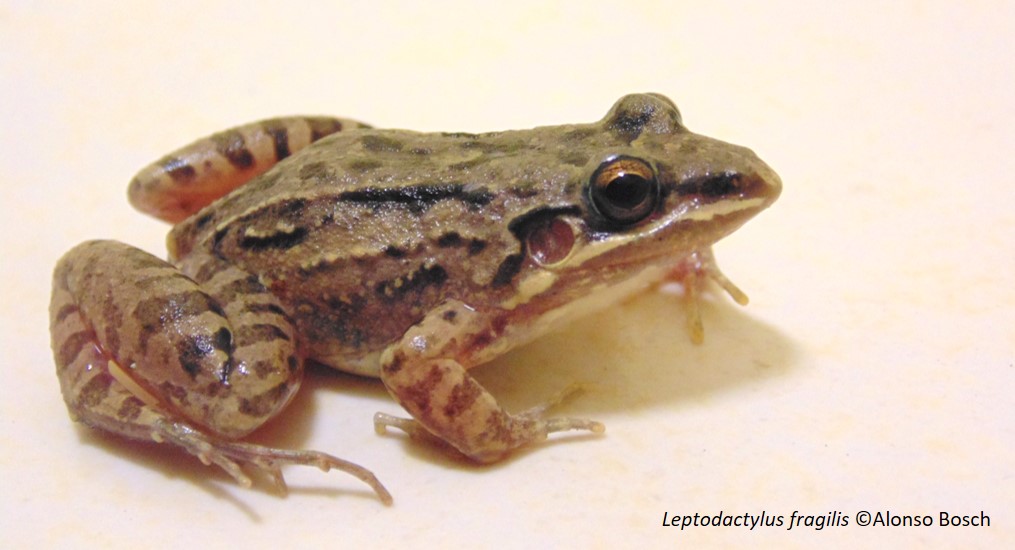While Cuba may be threatened by the invasion of the frog Leptodactylus fragilis, a species widespread in Central America, a study combining modeling and experiments on the vocalizations of the animal predicts areas susceptible to invasion and the possible impact on other amphibian species.

Alonso Bosch measuring a frog
On islands, local species are exposed to many threats, including biological invasions that generate predation and competition. Amphibians, which suffer from a global decline, may thus have their reproduction affected by other species whose vocalizations are too similar or disturbing and disrupt their communication. In Cuba, scientists are worried that the frog Leptodactylus fragilis, a species already widespread in Central America that has recently been observed in two localities of the island, might become invasive. To better anticipate this risk – and to be able to react accordingly with appropriate measures – Sergio del Castillo and his colleagues used an innovative dual approach. They first used modeling tools. Based on the climatic characteristics of many continental locations where the species is known to occur naturally, the team identified the critical parameters for the species to survive and reproduce. They then extrapolated to obtain a map of Cuba with all areas of potential habitat for the frog. The map was finally refined to exclude habitat types unsuitable for the species.
Second, the scientists investigated the acoustic characteristics of the species. Duration of vocalizations, intervals between calls and frequency, among other parameters, were extracted from audio recordings of several individuals. Field experiments were also conducted, using loudspeakers, to assess the efficiency of propagation – and thus that of invasion of the acoustic niche of other species – of the vocalizations of the frog in different environments.
The results of the study indicate that the species could invade a large part of the island, especially open habitats where its vocalizations propagate efficiently. Local species of amphibians are already present in these environments. The comparison of the acoustic characteristics of the Cuban species with L. fragilis revealed a strong similarity of the invasive species to the frog Peltophryne empusa. Endemic to Cuba, this species could thus be directly affected by the invasion of the new species in its environment. While worrisome, these results are extremely useful to quickly decide on conservation measures that could prevent or limit the invasion. The acoustic tool, using sound recordings to attract individuals, could then prove useful again!

The endemic species P. empusa (Copyright: Sergio del Castillo)
About the authors
Sergio del Castillo, the main author of the scientific article, is a young researcher from the Institute of Ecology and Systematics in Havana (Cuba). He developed his research during his education in France with an international master’s degree in behavioral ecology and wildlife management from the University of Bourgogne Franche-Comté, funded by the Investissements d’Avenir Program. For this, he benefitted from the financial support of the Caribaea Initiative.
References
Del Castillo Domínguez, S.L., González, C.A., Fernández, E.B., Pelea, L.P., Cézilly, F. & Bosch, R.A. (2021). Predicting the invasion of the acoustic niche: Potential distribution and call transmission efficiency of a newly introduced frog in Cuba. Perspectives in Ecology and Conservation, 19: 90-97, https://doi.org/10.1016/j.pecon.2020.12.002.

